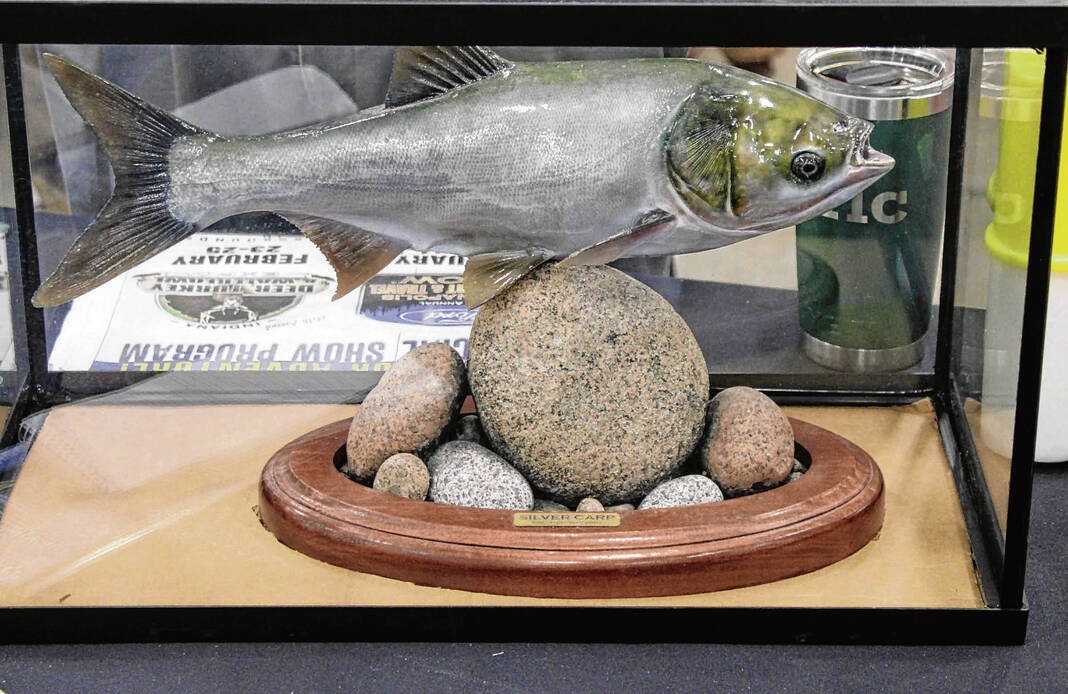
An example of the invasive Asian carp in Indiana waters.
Lew Freedman | The Tribune
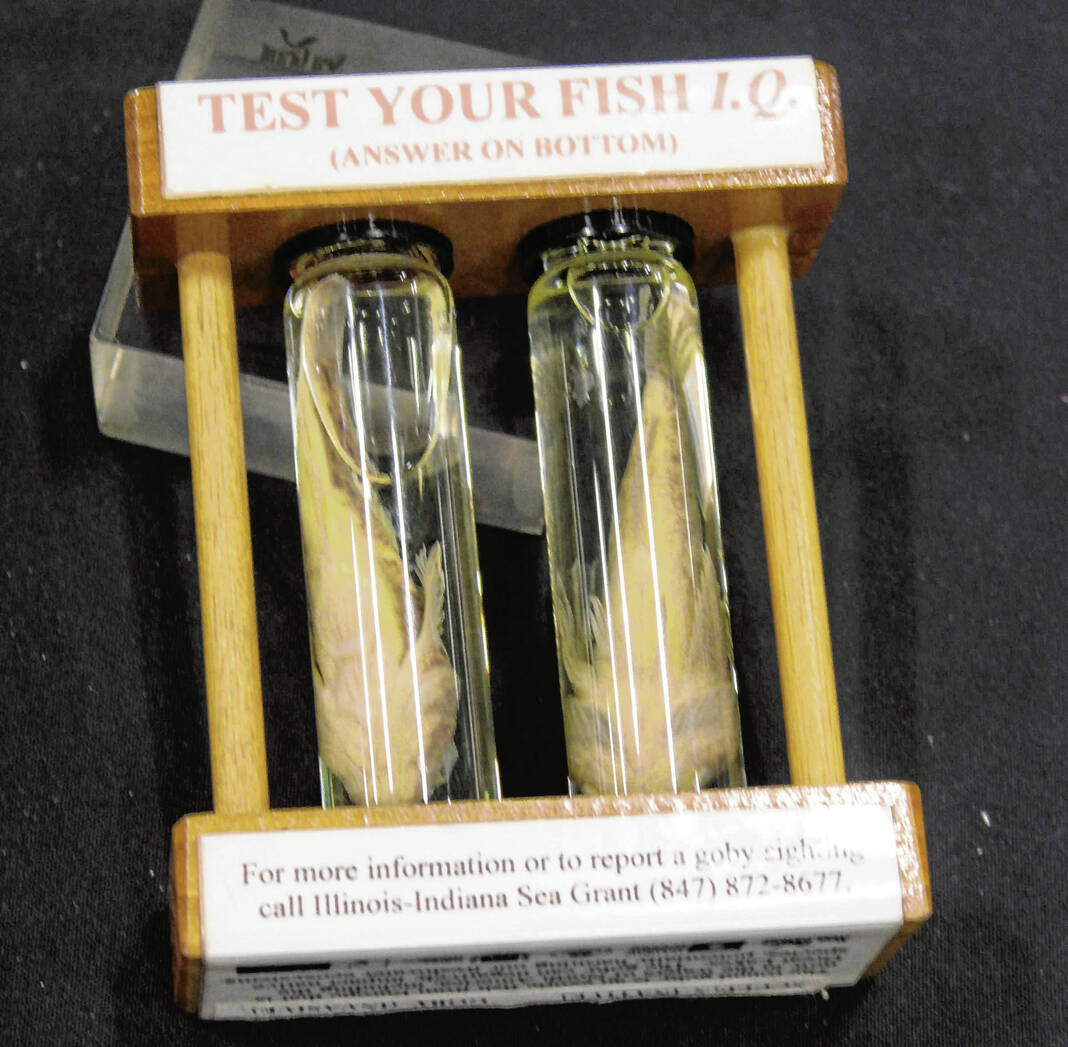
Goby are an aquatic invasive species in Indiana that “hitchhike” their way into state waters attached to the hulls of boats.
Lew Freedman | The Tribune
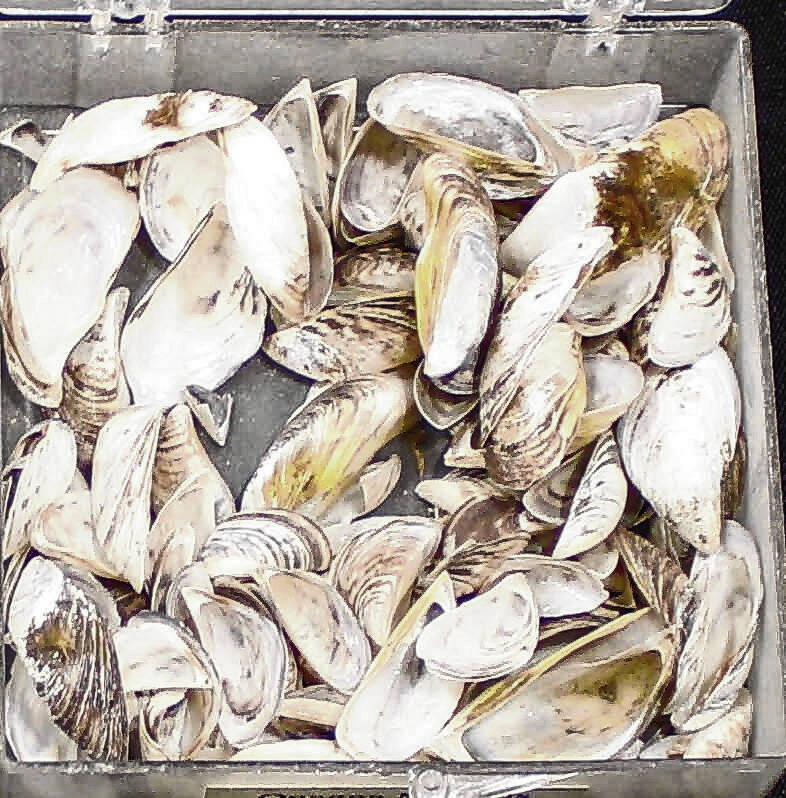
Zebra mussels, like goby, may only be two inches long, but can do extensive damage to habitat, affecting the nutrition levels of river and lake bottoms where native fish feed.
Lew Freedman | The Tribune
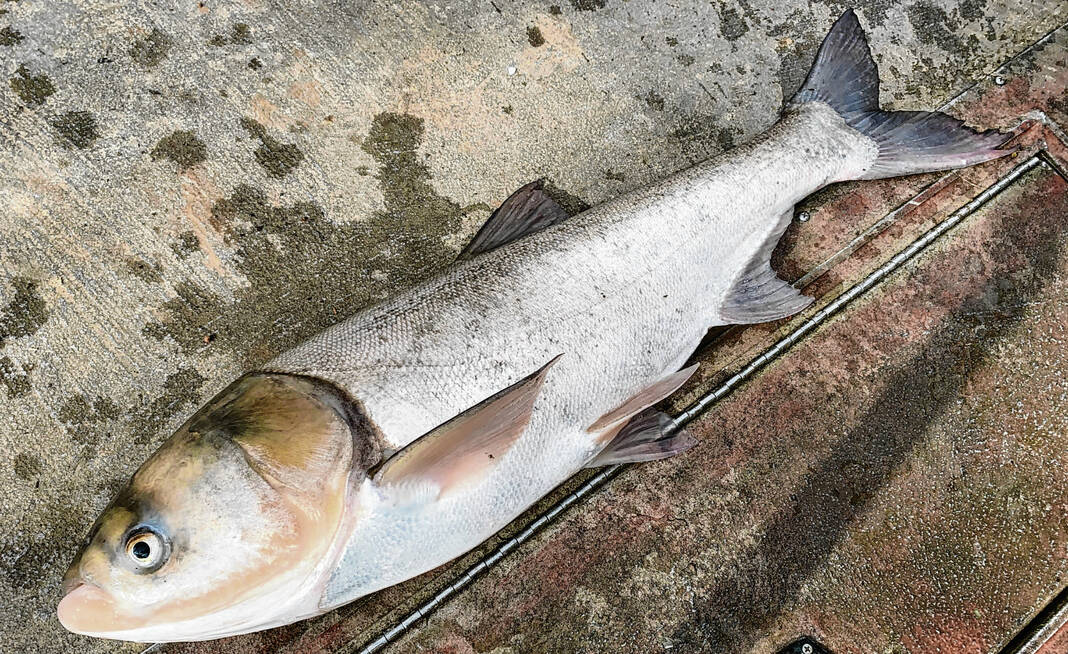
One of four types of invasive Asian carp in Indiana, this kind of adult silver carp can sometimes be jumping many feet out of the water.
Indiana Department of Natural Resources photo
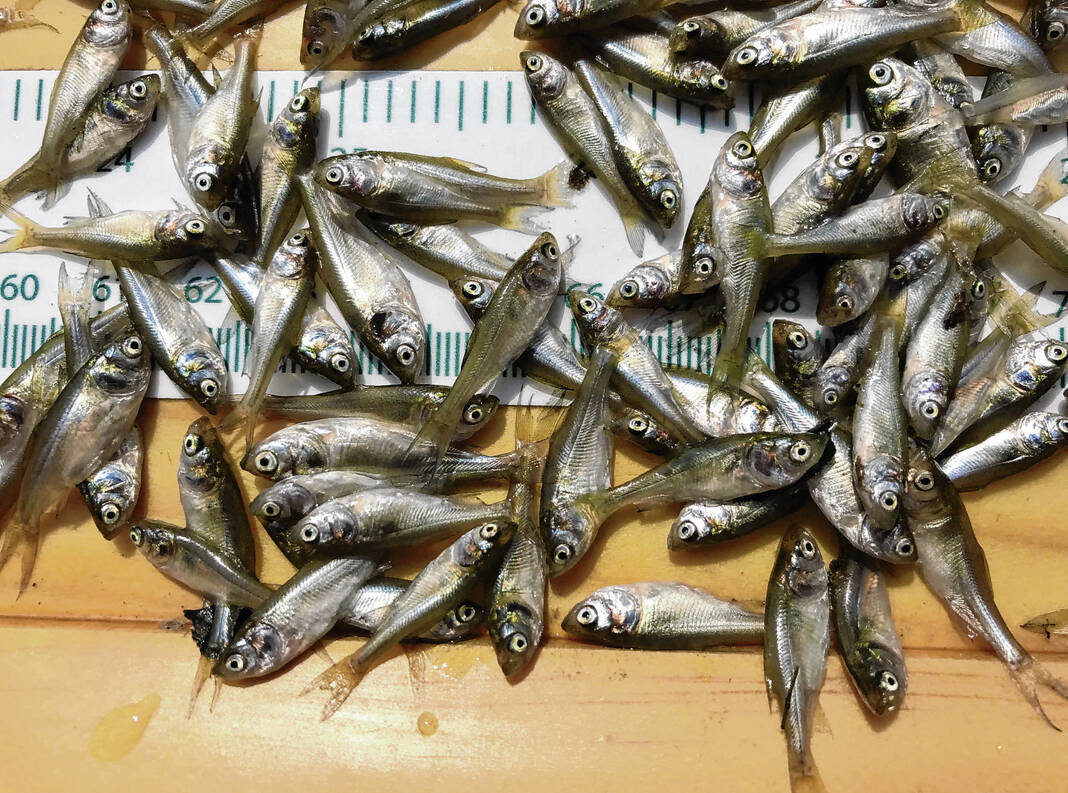
These are a group of baby silver carp, invasive species in Indiana waterways.
Indiana Department of Natural Resources photo
When the bad boys of Indiana’s waterways have business cards you know someone is trying to draw attention to them.
Not the invasive carp, goby or other illegal immigrants themselves seeking to take over rivers and lakes, but the humans implementing policies to repel them.
Throughout the recent February Indianapolis Boat, Sport and Travel Show, officials of the state Department of Natural Resources sought to act as college professors, dispensing knowledge about the unwelcome arrival and spread of select invaders to the state’s waters that can do harm or even result in near-eradication of Indiana native species.
“They can get out-competed,” DNR Aquatic Invasive Species Coordinator Eric Fischer said of native fish. “Everything needs the bottom of that food chain.”
This is an ongoing war that takes place out of sight, beneath the surface of the water, not only in Indiana, but across the Midwest and in other geographic regions. On the tiny species front, it is zebra mussels and goby that can invade. Much more visible are forms of Asian carp, invaders of much larger strength and size that are more frightful opponents for smaller native fish that need to ingest the same food and nutrients.
Fighting back against carp aggression by killing them is the general outlook for DNR and suggestions on how to do so can be creative. Gillnets and seines, as well as individual fishing rods can be used.
No idea is more intriguing than changing the name and identity of carp, which have been in Indiana 25-plus years, so they become welcome menu items at restaurants.
While that may sound like off-beat marketing, DNR invasive carp biologist Craig Jansen said it is entirely feasible because carp have an attractive taste.
“They’re good,” Jansen said. “It’s a really white meat.”
Some carp weigh around 7 or 8 pounds, others weigh 10-to-12 pounds. In Indiana, they currently inhabit the Ohio, Wabash and White Rivers.
“They’re probably always going to be here,” Jansen said.
Asian carp is the catch-all name for four types of invasive fish, silver, bighead, grass and black seen in Indiana. Asian carp have been fish-farmed in China for more than 1,000 years, but since they do not have citizenship papers in the United States they are viewed as the enemy to pre-existing fish types.
Over the decades, forms of carp have been introduced in the U.S. to clean commercial ponds and for food. However, they spread in abundance to additional bodies of water and began devouring plant life critical for the thriving of other species.
There was widespread alarm about 20 years ago when carp showed up in the Illinois River, following a swimming route from the South up the Mississippi River. One distinctive aspect of some carp is possessing the abilities of Olympic high jumpers.
Silver carp seem particularly spooked by the sound of boat engines and dramatically showed themselves by leaping eight-to-10 feet in the air while sometimes injuring helmsmen.
When the Environmental Protection Agency did a study, it reported some boaters being hit in the head and back by flying fish. There was at least one report of a boat found without humans circling under the power of its engine. The assumption was the driver had been knocked unconscious by a soaring fish, plunged overboard and drowned.
At the Indianapolis outdoor show, Fischer passed out information about aquatic invasive species printed on business-card-sized handouts. Among the tips spelled out was the suggestion to report new sightings in new places to DNR and also to “catch and eat.” More often, regulations impose catch-and-release rules.
Carp, especially when they splash around a boat, are hard to miss. A “round goby” may only be two inches long, quite a different challenge to spot. They are often lumped together with zebra mussels, which are about the same size. Zebra mussels originated in Russia and the Ukraine and likely came into the United States in the ballast water of ships. Goby, from the Caspian and Black Seas, may attach themselves to the hulls of recreational boats as they move from lake to lake. That is why goby, zebra mussels and purple loosestrife (a perennial plant spreading across North American wetlands), and New Zealand mud snails (mollusks) are called “aquatic hitchhikers.”
It is advised – and in some places is the law – to wash and energetically clean boats and trailers that are being taken from one body of water to another to help prevent the accidental transfer of an invasive species.
The anti-aquatic hitchhiker brochure distributed by the DNR is a guide for boat owners to play it safe and protect the waters they fish in and travel on. Operators are urged to wash the boats and trailer hitches and drain bilges and live wells to avoid shifting potentially contaminated water from one river to a lake. These are universal guidelines, among states. Invasive species do not respect state lines.
Once an invasive species infiltrates a body of water, it is almost impossible to completely eliminate despite millions of dollars spent trying. Yellowstone Lake inside Yellowstone National Park has been engaged in a lengthy battle to save native cutthroat trout in that popular body of water because someone deposited larger lake trout there. It has been a years-long, multi-million-dollar effort to avoid allowing lake trout to take over.
Also, the Wyoming department of Fish and Game staffs highway entry points to search boats at state lines to limit the chances of goby and mussels entering.
“You don’t want those to spread anymore,” Fischer said.
Those mini-invaders may be known by name because of DNR educational efforts, but anglers practically never see them. Fishermen can more likely relate to the presence of carp, especially if they hear a splash nearby, or see a jumping fish at their favorite fishing spot.
If someone catches a carp by accident while fishing for other fish, or targets that species, DNR is fine with that.
“There’s no limit,” Fischer said, “and there’s a lot of them out there.”
However, catching one carp at a time once-in-a-while hardly dents the population growth, or the invasive effect on other species and water bottom growth.
Suitably, since the state was hit hard by the carp invasion early, Illinois, in cooperation with federal authorities, has been in the front lines of a hoped-for much more significant solution. About two years ago, with the goal of helping to boost Great Lakes restoration, the EPA began funding a program to convince the public carp can make for edible and tasty meals.
The effort has been termed a re-branding, from a fish with a bad reputation into one with a new name – Copi. While Copi sounds like a cross between the late basketball star Kobe Bryant and the name of an Olympic mascot, administrators are counting on it presenting a friendlier image to the consumer.
Illinois a leader in the Copi program. The fish has appeared on restaurant menus in Illinois, Arizona and Washington, D.C., is sold in some markets in Illinois and Tennessee and is distributed in Illinois and other states. The initial goal was to catch and sell 6 million pounds of carp as Copi, then grow the program to 12 million pounds.
Fischer said Indiana is urging commercial fishermen to try to make a go of that industry.
“We want to see them harvested,” he said.
If there are skeptics about this entire re-branding, mentally turning a negatively-viewed fish into a desirable one to eat accompanied by rice and broccoli on a plate, Fischer has a response.
Such a thing has been done before, Fischer said of the carp to Copi trick.
There was once a bright-orange fish with a rounded head that in appealing appearance would seem to be a likely character in a Disney cartoon.
In the late 1970s, the U.S. Marine Fisheries Service, on the prowl for types of healthy fish for Americans to devour, took one look at the fish’s name, shook its administrative head “Uh, uh,” and worked to re-brand what was previously “slimehead” as a yummy eating fish called orange roughy.
